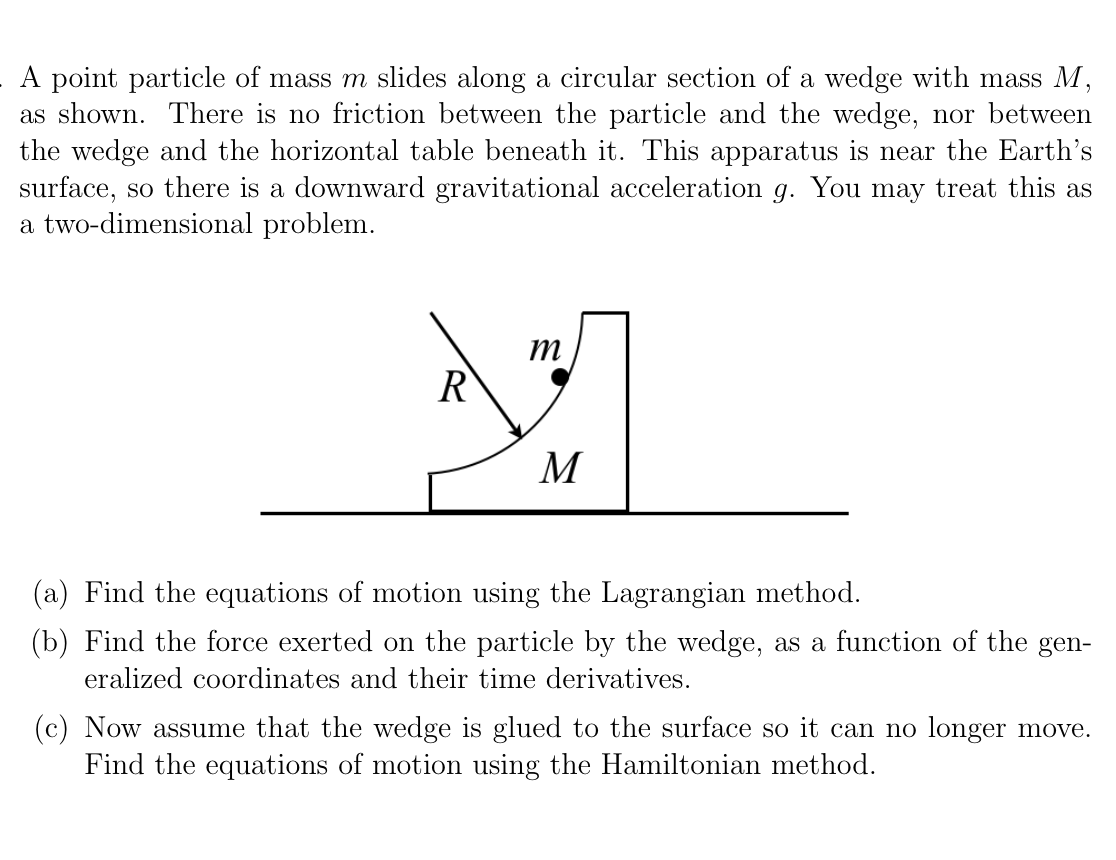A point particle of mass m slides along a circular section of a wedge with mass M, as shown. There is no friction between the particle and the wedge, nor between the wedge and the horizontal table beneath it. This apparatus is near the Earth's surface, so there is a downward gravitational acceleration g. You may treat this as a two-dimensional problem. R M (a) Find the equations of motion using the Lagrangian method. (b) Find the force exerted on the particle by the wedge, as a function of the gen- eralized coordinates and their time derivatives. (c) Now assume that the wedge is glued to the surface so it can no longer move. Find the equations of motion using the Hamiltonian method.
A point particle of mass m slides along a circular section of a wedge with mass M, as shown. There is no friction between the particle and the wedge, nor between the wedge and the horizontal table beneath it. This apparatus is near the Earth's surface, so there is a downward gravitational acceleration g. You may treat this as a two-dimensional problem. R M (a) Find the equations of motion using the Lagrangian method. (b) Find the force exerted on the particle by the wedge, as a function of the gen- eralized coordinates and their time derivatives. (c) Now assume that the wedge is glued to the surface so it can no longer move. Find the equations of motion using the Hamiltonian method.
Related questions
Question

Transcribed Image Text:A point particle of mass m slides along a circular section of a wedge with mass M,
as shown. There is no friction between the particle and the wedge, nor between
the wedge and the horizontal table beneath it. This apparatus is near the Earth's
surface, so there is a downward gravitational acceleration g. You may treat this as
a two-dimensional problem.
R
M
(a) Find the equations of motion using the Lagrangian method.
(b) Find the force exerted on the particle by the wedge, as a function of the gen-
eralized coordinates and their time derivatives.
(c) Now assume that the wedge is glued to the surface so it can no longer move.
Find the equations of motion using the Hamiltonian method.
Expert Solution
This question has been solved!
Explore an expertly crafted, step-by-step solution for a thorough understanding of key concepts.
This is a popular solution!
Trending now
This is a popular solution!
Step by step
Solved in 7 steps with 7 images
